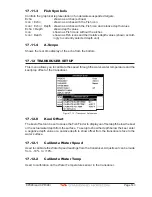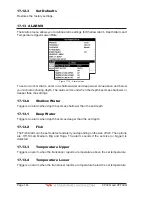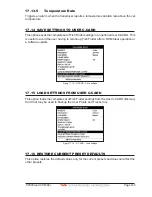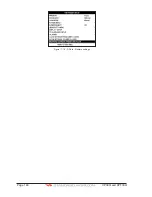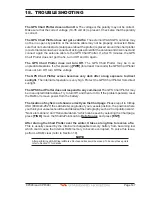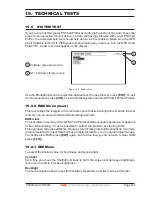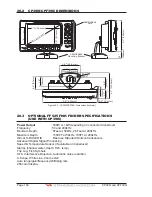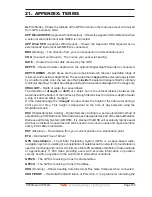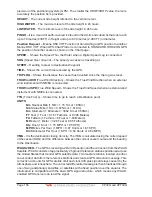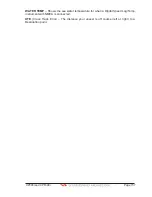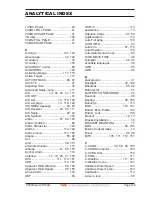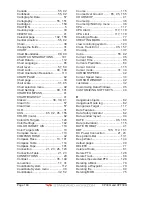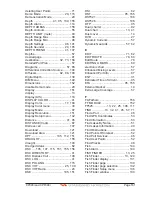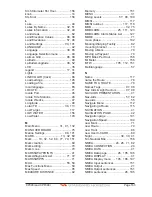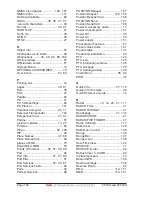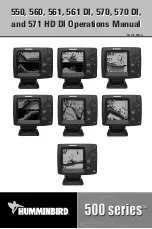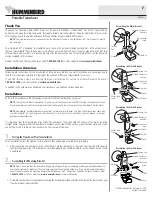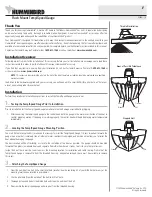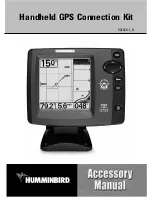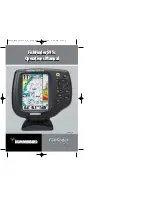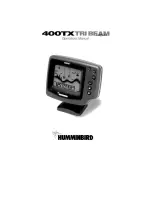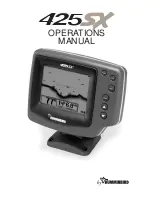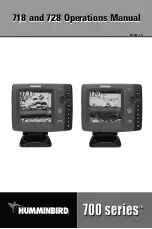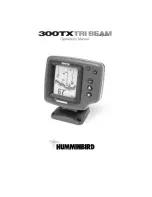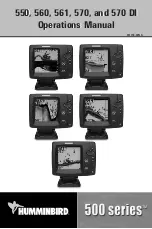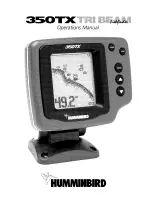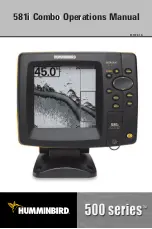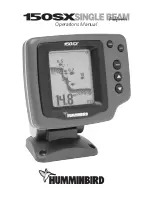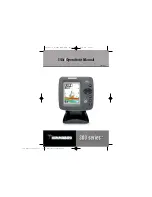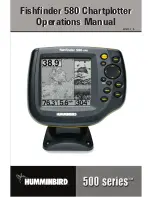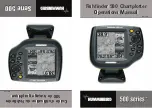
Page 150
CP390i and CPF390i
19.0.2 Cartridges
To check the C-CARD and its connector.
Internal Data Base Test
To test the Worldwide background.
C-CARD Test
To test the C-CARD. There are the possible situations:
1. if there is a C-CARD inserted in the slot and there is not a malfunction, the name of the
C-CARD zone and the message "OK" are shown.
2. if there is a C-CARD inserted in the slot, but it is a defective C-CARD, the name of the
C-CARD zone and the message "Faulty" are shown.
3. if there is not any C-CARD inserted in the slot, the message "not present" is shown.
4. if there is a User C-CARD inserted in the slot, the message
USER C-CARD
is shown.
C-CARD Connector
Indicates if there is a malfunction in the connector.
19.0.3 Serial Ports
If you are having problems receiving data from the position-finding instrument, this test
should help determine the problem.
Change Parameters
To change the parameters of the serial interface. This menu allows to select the
Port
(Signal
Source) between PORT 1, PORT 2, PORT 3, PORT4 and PORT 5; the
Baud Rate
between
300, 1200, 2400, 4800, 9600, 38400, 115200; the
Data Bits
(Word Length) between 7 or
8, the
Parity
between even, odd or none, the
Stop Bits
between 1 or 2. Default settings are:
Port = PORT 2, Baud Rate = 4800, Data Bits = 8, Parity = none, Stop Bits = 1.
Input Data Display
To allow the GPS Chart Plotter to act as a computer terminal and display the incoming data
exactly as it is received.
If the data displayed on the screen are unrecognizable, you may have selected the wrong
input parameters for your particular receiver, for example, Baud Rate 9600 instead of Baud
Rate 4800. Check your receiver manual to be sure that you have selected the proper
parameter. If the screen is blank, you may have a broken connection, and no data is being
received or you may have connected the device to the other input port.
Use
[ZOOM IN]
to stop (or continue after pause) data displaying,
[ENT]
to show data in hex
or ASCII mode (normal or small) and
[CLR]
to exit.
Loop-Back Test
This is a special test done during the production phase to check the serial ports integrity.
This function is only required by Standard Horizon.
Summary of Contents for CP390i
Page 1: ......
Page 5: ...Page 6 CP390i and CPF390i ...
Page 15: ...Page 16 CP390i and CPF390i ...
Page 29: ...Page 30 CP390i and CPF390i ...
Page 43: ...Page 44 CP390i and CPF390i ...
Page 53: ...Page 54 CP390i and CPF390i ...
Page 67: ...Page 68 CP390i and CPF390i ...
Page 75: ...Page 76 CP390i and CPF390i ...
Page 83: ...Page 84 CP390i and CPF390i ...
Page 87: ...Page 88 CP390i and CPF390i ...
Page 109: ...Page 110 CP390i and CPF390i ...
Page 145: ...Page 146 CP390i and CPF390i Figure 17 16 C Card Restore settings ...
Page 147: ...Page 148 CP390i and CPF390i ...
Page 153: ...Page 154 CP390i and CPF390i ...
Page 157: ...Page 158 CP390i and CPF390i ...
Page 168: ......








